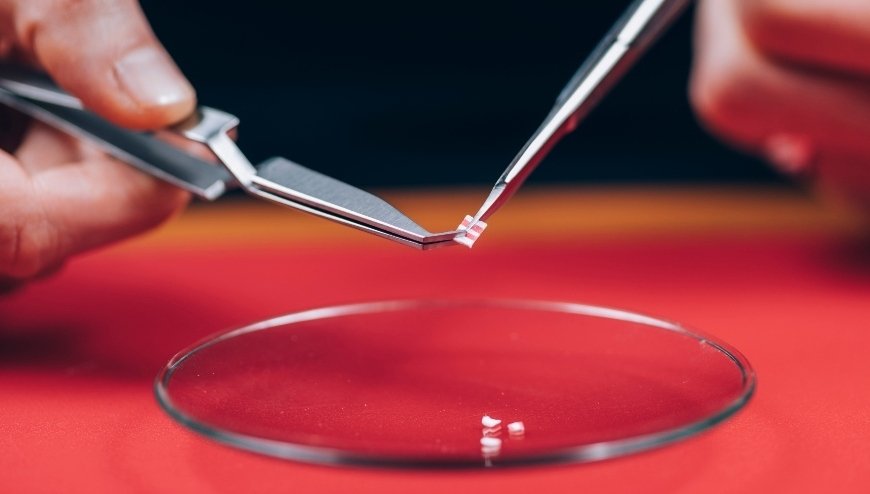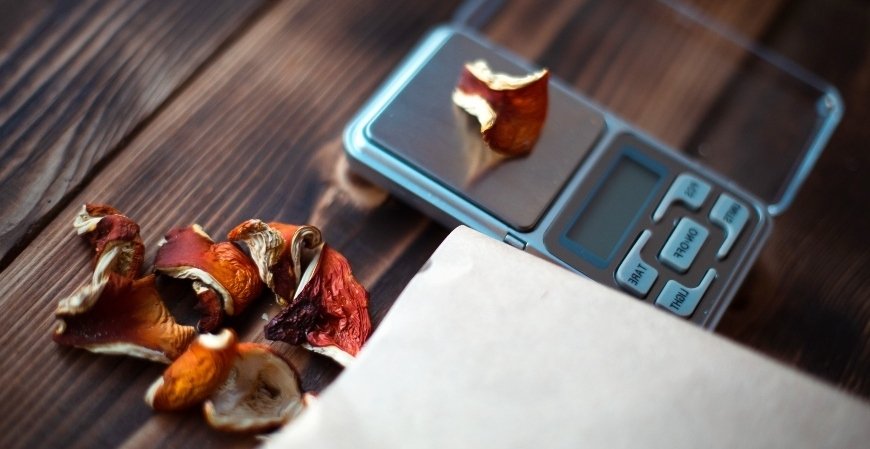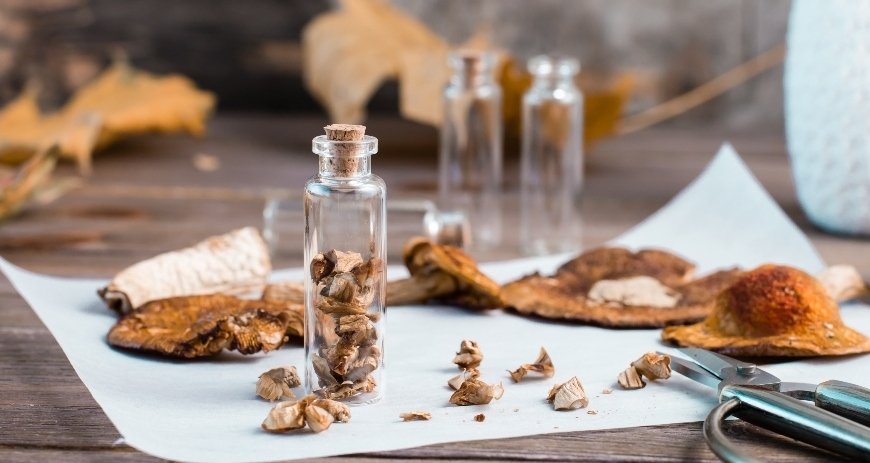What Is Microdosing?
Discover the potential benefits of microdosing psychedelics and learn how to safely explore this growing trend. Unlock the power of microdosing today!

Microdosing involves ingesting tiny amounts of psychedelic substances such as psilocybin mushrooms or LSD to experience subtle yet profound effects. This practice has been gaining traction among young adults due to its potential benefits and minimal risks compared with higher dosages. This article will delve into the world of microdosing, from learning its fundamentals to looking at some of the substances typically employed and assessing safety measures. Get ready for an enlightening journey into the fascinating realm of microdosing.
Table of Contents:
- What is Microdosing?
- Benefits of Microdosing
- Risks of Microdosing
- Types of Drugs Used for Microdosing
- Safety Considerations for Microdosing
- Conclusion
What is Microdosing?
Microdosing is a growing trend among those looking to reap the benefits of psychedelic substances without necessarily experiencing the full effects. This practice involves taking very small, sub-perceptual doses of psychedelics such as LSD or psilocybin (magic mushrooms). By ingesting such minuscule amounts, proponents of microdosing believe it is possible to gain the advantages of psychedelics without any associated drawbacks.
Investigations have uncovered that microdosing may be a viable strategy for managing certain psychological wellness issues, such as despondency and tension. In addition, there are anecdotal reports of increased creativity and improved focus in those who engage in this practice. Though further research is required to ascertain the exact mechanisms of microdosing and its long-term effects, it appears to offer a viable alternative for those seeking relief from mental health issues.
It’s important to note that since microdoses are so small—typically one tenth or less than a normal dose—the user will not experience any hallucinogenic effects typically associated with larger doses of psychedelic drugs. Users may observe an augmented level of attentiveness and clarity without experiencing any hallucinogenic effects, instead finding themselves in a more positive emotional state over the long term. They also report having better overall moods after engaging in this practice over time.
Microdosing has been linked to heightened cognitive performance on activities such as problem-solving and recollection when compared with placebo groups who had not ingested any psychedelic substances. Yet, further research is necessary to determine if these outcomes can be relied upon in different scenarios and amongst various groups.
Microdosing is a way of consuming cannabis that involves taking very small doses in order to achieve subtle effects. By understanding the benefits of microdosing, you can make an informed decision on whether or not it's right for you.
Benefits of Microdosing
Taking small amounts of psychoactive substances, such as cannabis, to reap their therapeutic effects without the risk of becoming inebriated has become a popular practice among young adults searching for natural alternatives to traditional treatments.
The potential advantages of taking small amounts of cannabis may include improved focus and imagination, higher energy levels, better moods and reduced stress. Research indicates that the utilization of minuscule amounts of cannabinoids may enhance mental acuity by increasing attentiveness and concentration while diminishing uneasiness. Furthermore, research indicates that microdosing with cannabinoids can also provide anti-inflammatory effects which may be of use to those suffering from chronic pain or autoimmune disorders.
Evidence suggests that small doses of THC, the primary psychoactive element in cannabis, could potentially offer antidepressant effects for those suffering from depression or anxiety. This could potentially provide an alternative treatment option for individuals who don't respond well to traditional pharmaceutical medications or psychotherapy alone.
It's worth noting that not all of the potential hazards associated with regular cannabis use are applicable to microdosing; no evidence suggests any long-term adverse effects from using this method responsibly. Nonetheless, one must remain vigilant when introducing any new medication or therapy into their regimen, as individual physiology and lifestyle habits may vary drastically between individuals. It's also essential to ensure you're obtaining your product from a reputable source in order to avoid contaminants like pesticides or heavy metals which could potentially cause harm if ingested over time at high enough concentrations.
The benefits of microdosing cannabis seeds can be numerous, ranging from improved mood to increased creativity. Yet, prior to engaging in microdosing cannabis seeds, the possible hazards should be thoroughly examined; this topic will be delved into further in the following section.

Risks of Microdosing
Microdosing, the practice of taking small doses of psychedelic substances such as LSD and magic mushrooms, is gaining popularity among young adults. While proponents argue that microdosing can provide a range of benefits from improved creativity to better mental health, it’s important to consider potential risks associated with this practice.
It is noteworthy that the impacts of microdosing on mental wellbeing and intellectual capacity over the long haul are as yet unclear, making this an area requiring further exploration. Therefore, anyone considering trying out this trend should be aware that there are real risks involved with using these powerful psychedelic drugs - even if taken in very small quantities - so caution must always be exercised when experimenting with them.
Before attempting microdosing, it is essential to recognize the associated hazards. Let's explore the substances commonly utilized for microdosing, keeping in mind the potential risks.
Types of Drugs Used for Microdosing
Psychedelics are compounds that can bring about shifts in consciousness, resulting in modifications to perceptions, feelings and behavior. Common psychedelics include LSD, psilocybin mushrooms, mescaline from peyote cactus, and DMT. These drugs are known for their ability to induce spiritual experiences, help users connect with nature, increase creativity and expand awareness. Microdosing these substances allows people to reap some of these benefits without having intense psychedelic trips or putting themselves at risk for adverse reactions.
Hallucinogens are another type of drug commonly used in microdosing. This class of drugs encompasses various substances, such as Ketalar for dissociative effects; Salvia divinorum to produce visual distortions; ayahuasca to induce visions; ibogaine for introspection purposes; (ecstasy/molly) having the capability of raising empathy.
The types of drugs used for microdosing vary greatly, but it is important to research the effects and safety considerations before using any type of drug. Prioritizing safety is key when looking into microdosing, so it's essential to assess any possible hazards associated with this practice before going ahead.

Safety Considerations for Microdosing
Safety is of utmost importance when engaging in microdosing. Microdosing consists of ingesting minute doses of a medication or supplement to enjoy its advantages without encountering any possible adverse effects related with greater dosages. Nevertheless, caution should be exercised when engaging in microdosing as there are potential risks to consider.
Dosage Levels:
The amount of a substance used for microdosing should always be kept low enough so as not to produce any noticeable psychoactive effects. Generally speaking, this means using doses no larger than a fraction of what would typically be considered an effective amount for treating medical issues like depression or anxiety. At bigger doses, the likelihood of negative consequences can be quite high and could even lead to an overdose if not watched carefully. It's also important to note that different drugs have different dosage levels; therefore it's important to research each one carefully before starting a regimen.
Frequency:
In addition to controlling dosage levels, frequency is also an important factor when it comes to safely microdosing substances like psychedelics or cannabis. For example, with psychedelics like LSD or psilocybin mushrooms, users should only take them every few days rather than daily in order for their body’s tolerance level not build up too quickly. Similarly with cannabis seeds, users should limit themselves from smoking more than once per day and try out other methods such as edibles instead in order get the desired effect while avoiding possible issues related overconsumption.
Finally, it is worth noting that everyone reacts differently depending on their own unique biochemistry. Consequently, it is important to take a gradual approach by gradually upping your dosage until you find the most suitable option for yourself while being mindful of all safety protocols.
Microdosing: A Personal Experience
Despite the potential benefits, microdosing still involves taking drugs in small doses and carries risks that must be considered. Before trying microdosing, make sure you understand the types of drugs used for this purpose and their associated safety considerations. Ultimately, only you can decide if the possible benefits outweigh any otential risks when it comes to microdosing.




















































































































